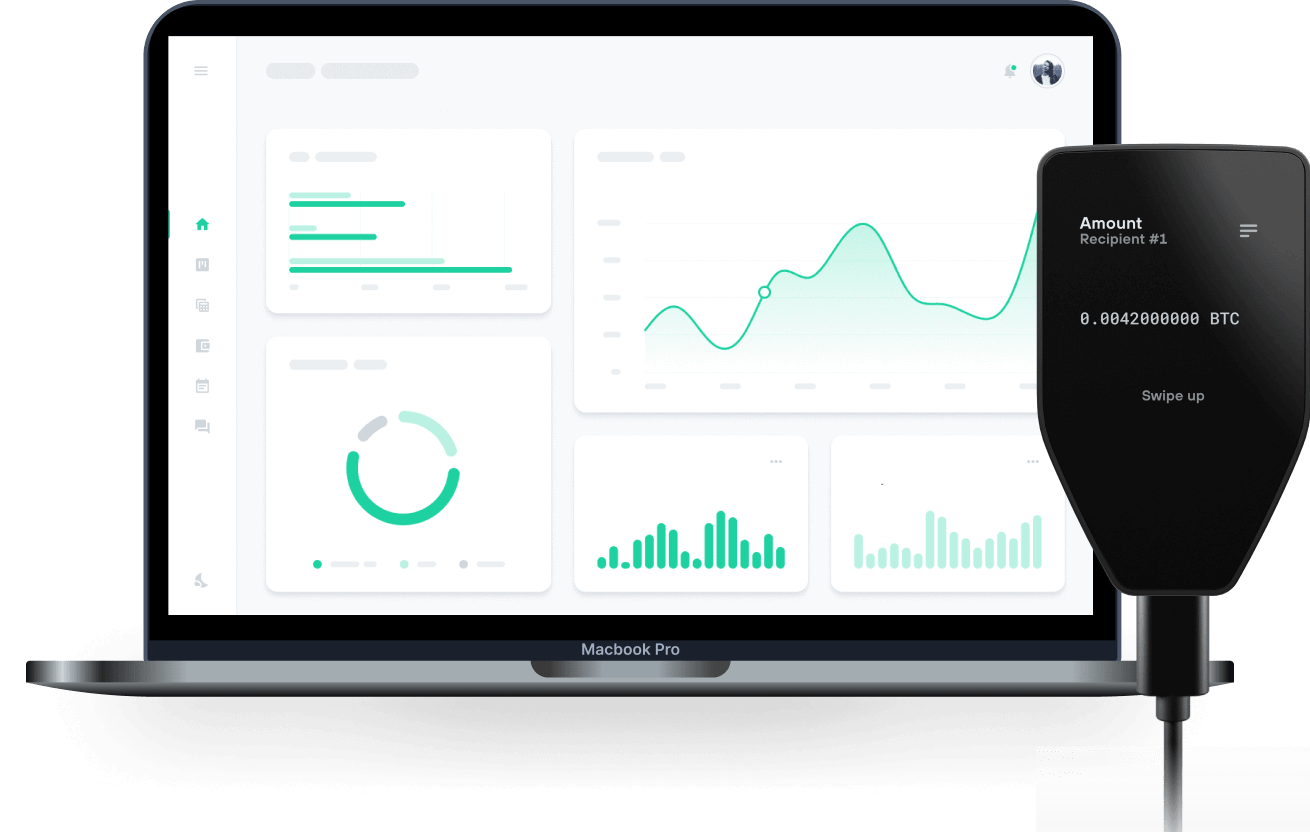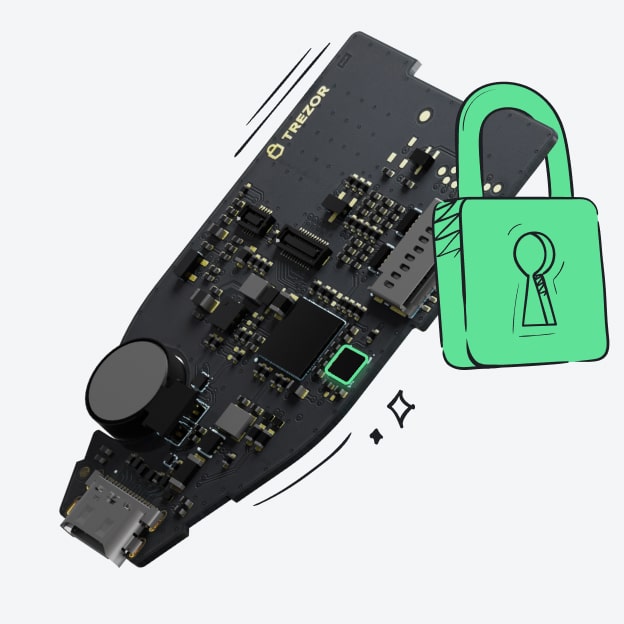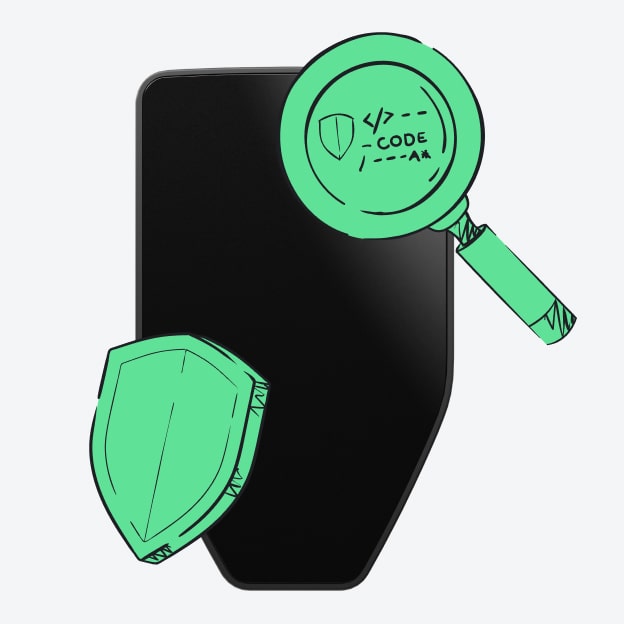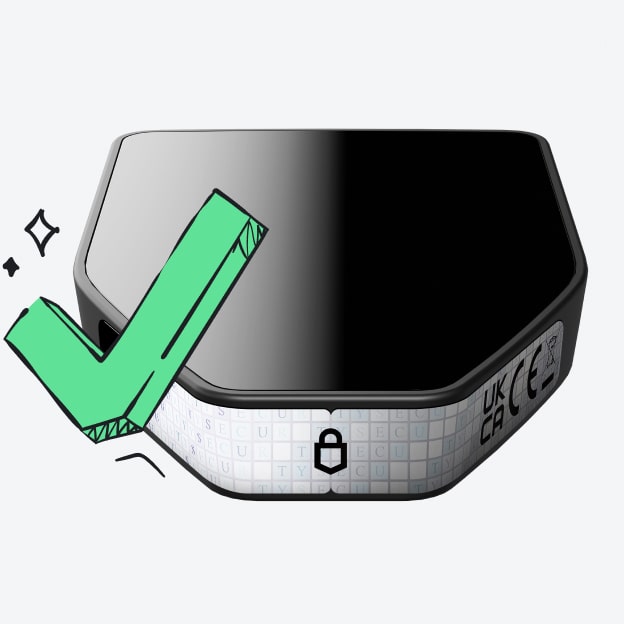Safe & secure Tezos wallet
Use the security of your Trezor hardware wallet to safely manage your Tezos.
- Secured by your hardware wallet
- Trusted by over 2 million customers

Buy, sell & manage your Tezos with Trezor Hardware wallets

Send & receive

Buy, sell & swap
Trezor hardware wallets that support Tezos
Sync your Trezor with wallet apps
Manage your Tezos with your Trezor hardware wallet synced with several wallet apps.
Briskett
Supported Tezos Networks
- Tezos
- Etherlink
Why a hardware wallet?
Go offline with Trezor
- You own 100% of your coins
- Your wallet is 100% safe offline
- Your data is 100% anonymous
- Your coins aren’t tied to any company
Online exchanges
- If an exchange fails, you lose your coins
- Exchanges are targets for hackers
- Your personal data may be exposed
- You don’t truly own your coins
How to XTZ on Trezor
Connect your Trezor
Open a third-party wallet app
Manage your assets
Make the most of your XTZ
Trezor keeps your XTZ secure
 Your tokens, your control
Your tokens, your controlAbsolute control of every transaction with on-device confirmation
 Clear & simple wallet backup
Clear & simple wallet backupRecover access to your digital assets with a new backup standard

The best defense against both online and offline threats

Transparent wallet design makes your Trezor better and safer

Packaging & device security seals protect your Trezor’s integrity
What Is Tezos (XTZ)?
Tezos is a high-performing blockchain and open-source platform for assets and applications, with a strong focus on code security, on-chain governance, and decentralization. Tezos 2.0, the upcoming step in the evolution of Tezos, aims to improve scalability (via layer 2s), composability, and to implement support to mainstream programming languages (like Javascript, Typescript, Python, and many others).
Initially built with formal verification in mind, the Tezos protocol enables builders to avoid bugs when developing smart contracts, making it particularly suited to applications that require a high degree of security and certainty.
Tezos’ LPoS (Liquid Proof-of-Stake) consensus mechanism enables any stakeholder to take part, directly or by delegation, in the consensus process, and to be rewarded for securing the network. Rather uniquely, Tezos’ on-chain governance system also enables stakeholders to create and vote on protocol upgrade proposals. This pioneering system allows the protocol to self-amend and upgrade itself without leading to a split (or fork) in the blockchain, empowering the community without slowing down innovation.
First proposed in 2014 and launched in 2018, the Tezos Mainnet has a proven track record of running uninterrupted ever since, having earned a strong reputation for technical excellence and a supportive community.
Who Are the Founders of Tezos? Tezos was conceived by Arthur and Kathleen Breitman in a 2014 white paper under the pseudonym L.M. Goodman in a nod to Satoshi Nakamoto, referencing a journalist who had misidentified the creator of Bitcoin.
In a previous paper, the Breitmans had argued that Bitcoin's biggest shortcomings were the lack of a governance process that invited contributions from its community of users, cost and centralization issues raised by its proof-of-work system, the limited expressiveness of its programming language which didn’t allow for smart contracts, and security